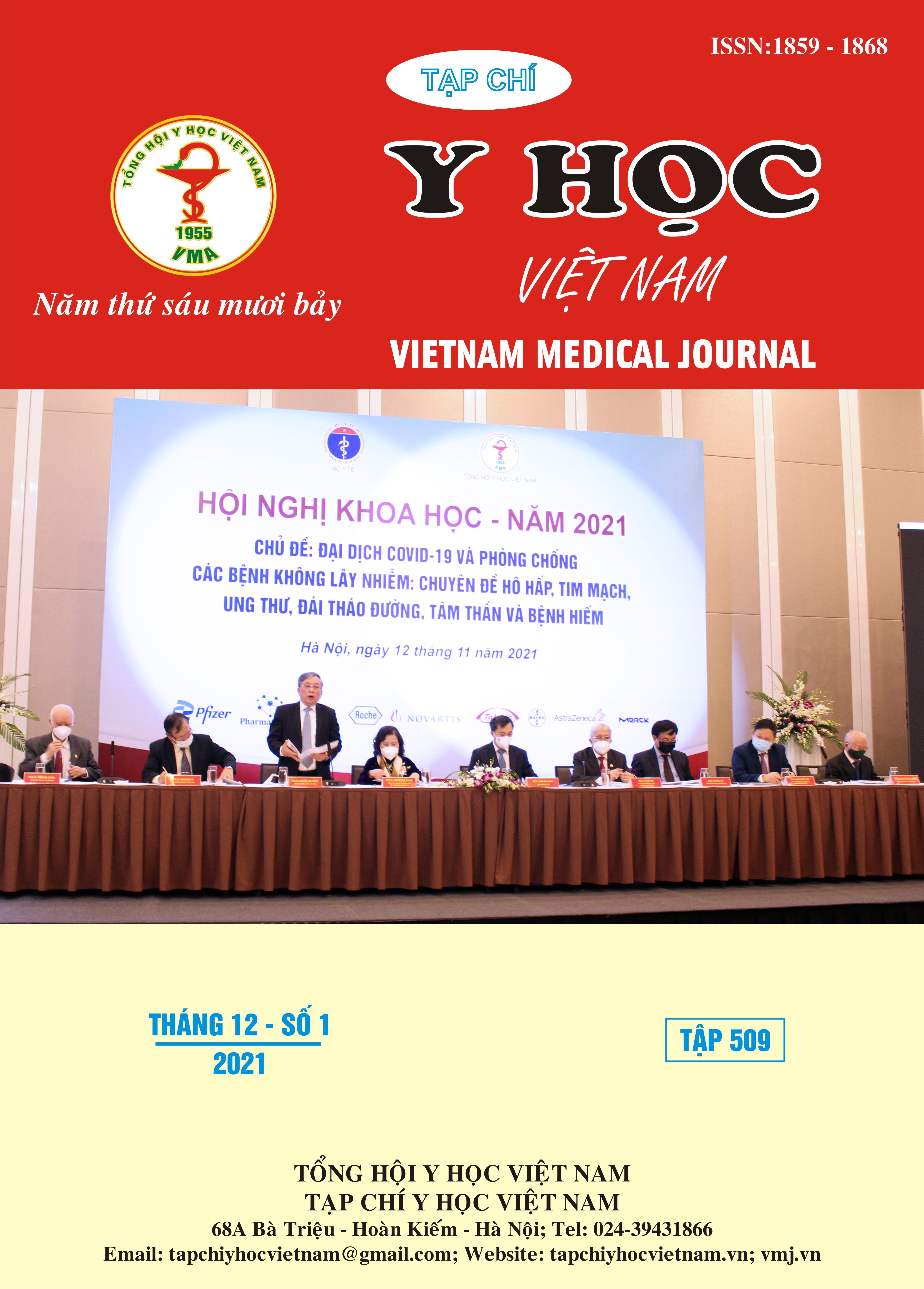TRANSCRANIAL DOPPLER ULTRASOUND IMAGING IN PATIENTS WITH RUPTURED CEREBRAL ARTERIOVENOUS MALFORMATION
Main Article Content
Abstract
Objectives: To describe transcranial Doppler (TCD) ultrasound imaging and assess value diagnostic of transcranial Doppler ultrasound in patients with intracranial hemorrhage due to ruptured cerebral arteriovenous malformation (AVM). Methods: A descriptive cross-sectional study of 36 cases with ruptured cerebral AVM who were treated at Bach Mai Hospital from October 2019 to July 2021. Results: Mean age was 43±14,7 years old, male/female ratio was 1,27/1. Admisssion reasons: nausea/vomitting were 97,2%, headache was 94,4%, altered level of consciousness was 30.6% and hemiplegia was 50%. The common hemorrhagic location was in cerebral lobules. The percentage of hematoma sizes smaller than 3cm, from 3 to 6cm and greater than 6cm were 58.3%, 38.9%, and 2.8%, respectively. The ruptured AVM feeding vessels originate from midle cerebral artery were 52,78%. The AVM had 3 or 4 feeding arteries were 91,67%, had more than 4 feeding arteries were 8,33%. The AVM with pure one draining vein was 72,2%, with 2 or more draining veins was 27.8%. The confirmed diagnostic rate of AVM feb by middle cerebral artery branches by TCD ultrasound was 89,47%. Postive prediction value based on CTA for small, medium and large AVM was 40,9% 93,75% and 100%, respectively. Mean flow velocity on the feeding vessels originate from MCA was higher than those in the contralateral MCA. (significant difference, with p <0,05). Conclusion: The predominant age group in ruptured AVM was 40 years old and above (63,9%); the mean age was 43 ± 14,7, male/female ratio was 1,27/1. The common hemorrhagic location were in cerebral lobules (85,72%), hematoma sizes smaller than 3cm with pure one draining vein was 72,2%. TCD ultrasound was the useful tool to diagnose the medium and large AVM with high sensitivity.
Article Details
Keywords
Ruptured cerebral arteriovenous malformation (AVM), Transcranial Doppler (TCD)
References
2. Cognard C, Spelle L., and Pierot L. (2004), Pial arteriovenous malformations in: Intracranial vascular malformations and aneurysm, Springer. 39-92.
3. Shaligram S.S., Winkler E., Cooke D. và cộng sự. (2019). Risk factors for hemorrhage of brain arteriovenous malformation. CNS Neurosci Ther, 25(10), 1085–1095.
4. Phan Văn Đức, Lê Văn Thính, Hoàng Văn Thuận (2018), siêu âm Doppler xuyên sọ và hình ảnh chụp mạch máu não của dị dạng thông động-tĩnh mạch não.
5. Marco A.Stefani, Phillip J.Porter, et al (2002), Large and deep brain arteriovenous malformation are associated with risk of future hemorrhage, Stroke, 3. 1220.
6. Deruty R, et al (1985), Les malformations Arterio-veineuses Cerebrales, Neurochir, 31. 21-29
7. Phạm Hồng Đức, Phạm Minh Thông, Lê Văn Thính (2010), Các yếu tố cấu trúc mạch liên quan đến biểu hiện xuất huyết của dị dạng động tĩnh mạch não, Tạp chí Y học thực hành (705) - số 2, 52-55.
8. Mast H, Mohr JP, Osipov A, et al (1995) Steal is an unestablished mechanism for the clinical presentation of cerebral arteriovenous malformations, Stroke, 26. 1215–1220


